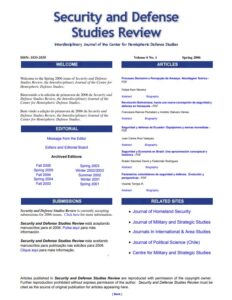The author analyzes the evolution of Ecuador's security agenda from its historical roots to its most recent development during the conflict with Peru and the effects of the conflict on the Colombian border. The author maintains that Ecuador's security agenda was historically focused on the hypotheses of a conventional conflict with Peru and was based on its military forces playing a guardianship and social integration role, which helped the general populace identify with issues of security and defense. For these reasons, Ecuador's military forces sought to be essentially dissuasive against the military superiority of the country's neighbors. However, the conception of Ecuador's security and defense was to change direction in the late 1990s, as it turned its attention to the threats represented by the rise of Colombia's internal conflict on Ecuador's border. The weakness of the President Uribe Vélez' democratic security strategy on the Colombia-Ecuador border and the influence of the United States government will be fundamental in the formation of this new security agenda. Paradoxically, however, becoming involved in the Colombian conflict can have negative consequences for Ecuador's security. Although Ecuador denounces the detrimental effects of the Colombia plan for Ecuador's security, it seeks to simultaneously benefit from the Andean Regional Initiative that has similar purposes. The Ecuadorian state seems to have traditionally focused its security agenda on external threats, while the country's great internal, political and economic instability is perhaps the more significant source of insecurity that has also hindered the establishment of a policy for a coherent and lasting defense.

